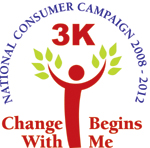| NST : US groups' tests show lead high in many kids' products |
 |
 |
 |
| Written by Administrator |
| Monday, 14 September 2009 15:22 |
|
16 December 2007 Many toys sold in Malaysian stores are made in China. What concerns the public is not knowing what exactly is in them, how much of it is harmful and if the use of potentially harmful substances can be avoided in their manufacture.
DETROIT: Tests on more than 1,200 children's products, most still on store shelves, found that 35 per cent contain lead -- many with levels far above the federal recall standard used for lead paint. A Hannah Montana card game case, a Go Diego Go! backpack and Circo brand shoes were among the items with excessive lead levels in the tests performed by a coalition of environmental health groups across the United States. Only 20 per cent of the toys and other products had no trace of lead or harmful chemicals, according to the results released by the Michigan-based Ecology Center along with the national Center for Health, Environment and Justice and groups in eight other states. Of the 1,268 items tested, 23 were among millions of toys recalled this year. Mattel Inc recalled more than 21 million Chinese-made toys on fears they were tainted with lead paint and tiny magnets that children could accidentally swallow. Mattel's own tests on the toys found that they had lead levels up to 200 times the accepted limit. The Consumer Action Guide to Toxic Chemicals in Toys shows how the commonly purchased children's products rank in terms of containing lead, cadmium, arsenic and other harmful chemicals. Tracey Easthope, director of the Ecology Center's Environmental Health Project said 17 per cent of the children's products tested had levels of lead above the 600 parts per million federal standard that would trigger a recall of lead paint. Jewellery products were the most likely to contain the high levels of lead, with 33.5 per cent containing levels above 600 ppm. Among the toys that tested above that limit was a Hannah Montana Pop Star Card Game, manufactured in China, whose case tested at 3,056 ppm. The American Academy of Pediatrics recommends a level of 40 ppm of lead as the maximum that should be allowed in children's products. Lead poisoning can cause irreversible learning disabilities and behavioural problems and, at very high levels, seizures, coma, and even death. A spokeswoman for New York-based Cardinal Industries Inc, which sells the Hannah Montana game, said the product had passed internal tests. According to Jeff Gearhart, the Ecology Center's campaign director: "Companies can make clean products. Our sampling shows that there's no reason to put lead in a product." The testing began last year but most of the items were checked in the past six months, he said. Joan Lawrence, the Toy Industry Association's vice president of standards and safety, said the group and its members support limiting accessible lead in children's products. But she said the industry and standard-setting bodies were struggling with how to measure exposure, accessibility and what limits to set. She said she hadn't seen all of the Ecology Center's findings but called them misleading because the testers did not appear to follow recognised test procedures for lead and other substances. The two most common ways are to use solutions to simulate saliva and digestion, and another to attempt to dissolve the surface coating. The centre and its testing partners performed what they describe as a "screening" of chemicals using a handheld X-ray fluorescence device that detects surface chemical elements. "The mere presence of any substance alone is only half of the answer; you need to know if it's accessible to the child," Lawrence said. Easthope said it was important for people to know what was in the products since nobody else was providing this data. "We're not saying that ... all of it will come out into a child," she said. "We're saying it's a concern that so much of these products have these chemicals of concern in them. "We shouldn't have lead in kids' products. We can make products without lead in them." US Consumer Product Safety Commission spokesman Scott Wolfson said the agency would seek to verify the Ecology Center's findings and initiate recalls if warranted. He said the commission had been meeting with ASTM International, which spearheads voluntary safety standards for toys, to discuss crafting standards specific to lead in plastics. He said there also was movement in the US Congress to revise laws on lead in children's products. Wolfson said the commission launched 40 toy recalls in the last fiscal year, three involving lead-paint violations. This year, there were 61 recalls, 19 involving lead-paint violations. "What we would like consumers to know is that more recalls are on the way."
|
NCCC NEW OFFICE
| National Consumer Complaints Centre | |||||||||||
|
 NCCC di Pentas Media
NCCC di Pentas Media 


